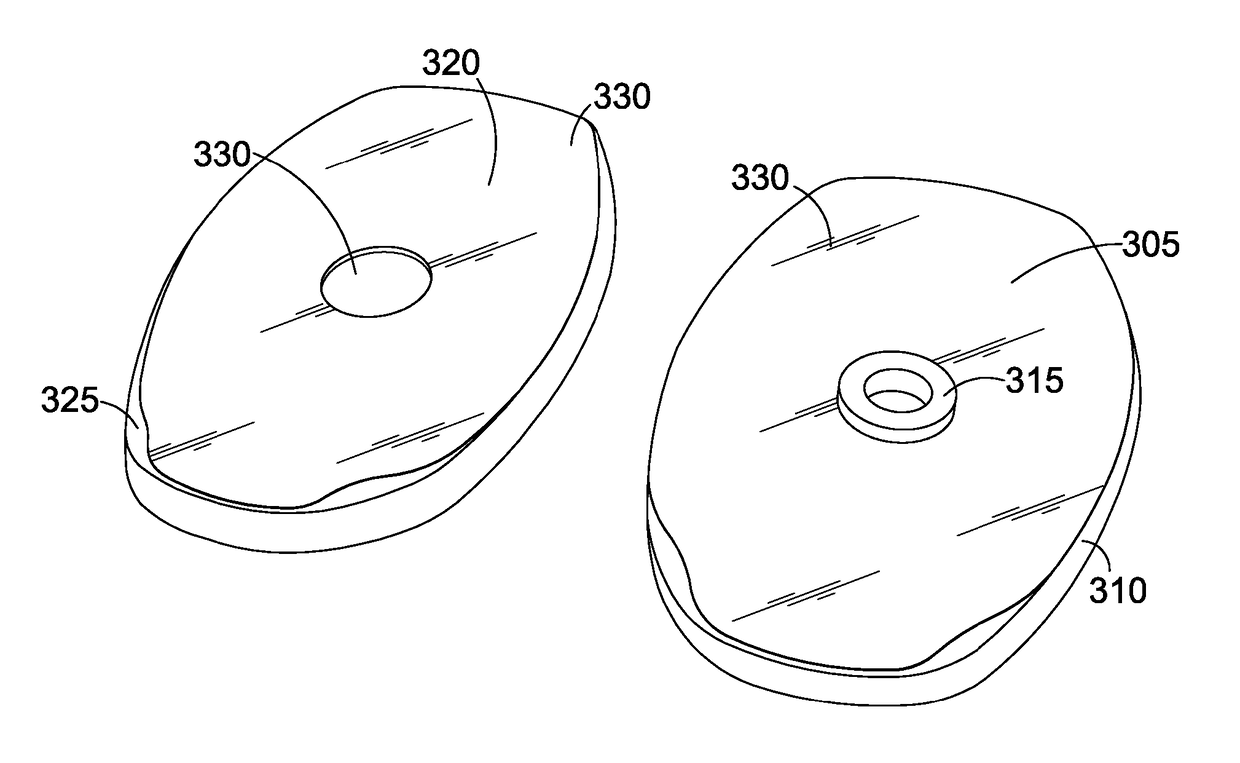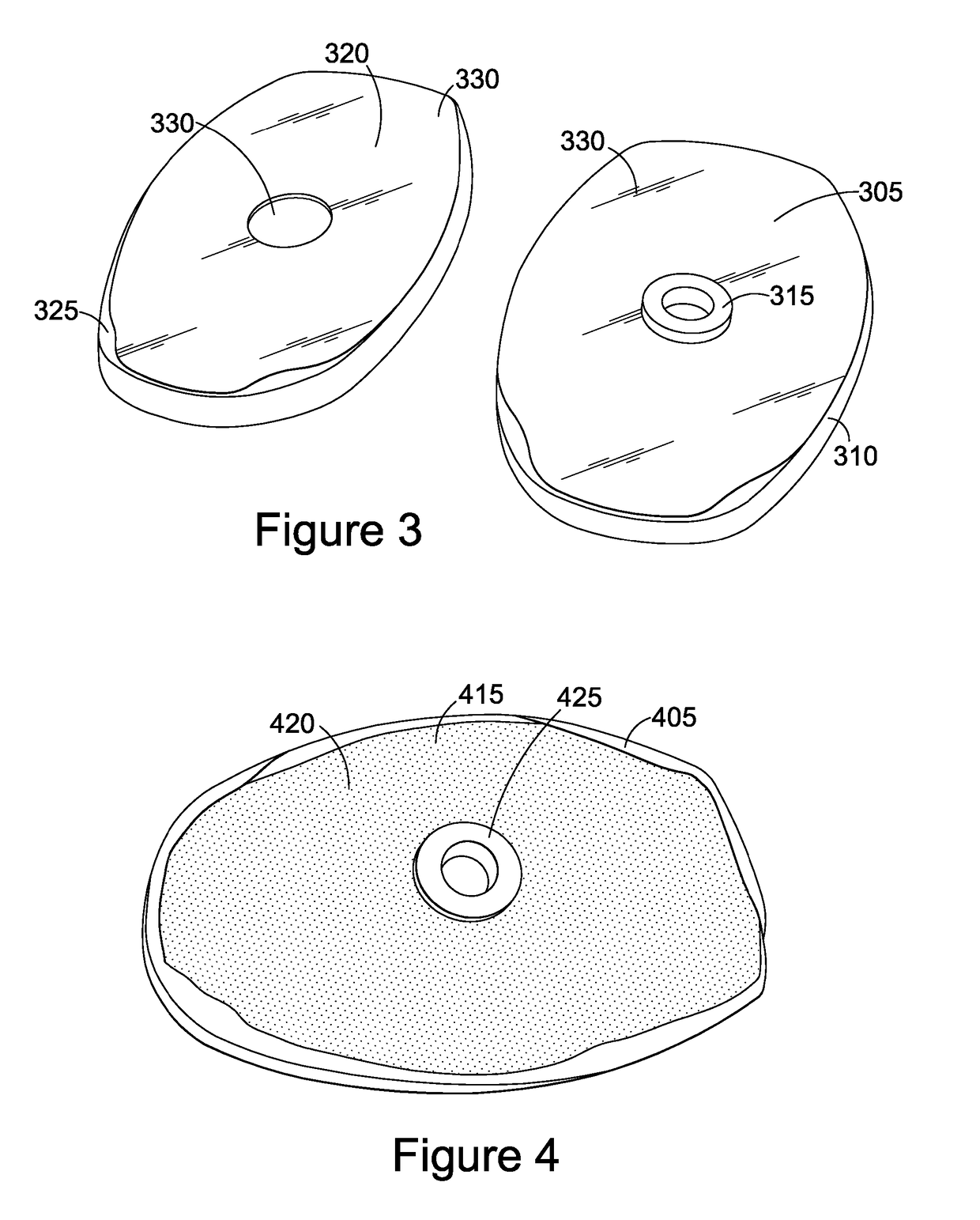Rotatable sole assembly
a technology of rotatable soles and soles, which is applied in the field of rotatable soles for shoes, can solve the problems of increasing the risk of occurrence of more severe injuries, affecting the comfort of wearing, etc., and achieves the effects of increasing torque, reducing the risk of injury, and reducing the stiffness of elastic materials
- Summary
- Abstract
- Description
- Claims
- Application Information
AI Technical Summary
Benefits of technology
Problems solved by technology
Method used
Image
Examples
Embodiment Construction
[0082]The rotation (tare) “Torc” mechanism is a midsole component or midsole assembly that can be incorporated into many types of footwear at the time of manufacture. It allows for rotation of the foot relative to the floor whilst still maintaining frictional contact, and buffering the transfer of potentially painful or damaging torque forces to the lower leg of the wearer.
[0083]Installation of the mechanism does not alter the weight or feel of the footwear, and adds nothing to the thickness of the host shoe. Generally, the rotation mechanism (or the midsole assembly) is adhered in place on the forepart of the host shoe, with the original outsole (which is sliced off the midsole when it was removed from the host shoe) stuck to the bottom of the mechanism to maintain its slip resistance properties. It allows the wearer to rotate the forepart of their shoe relative to the ground without either compromising slip resistance or transferring potentially damaging torque forces through the ...
PUM
 Login to View More
Login to View More Abstract
Description
Claims
Application Information
 Login to View More
Login to View More - R&D
- Intellectual Property
- Life Sciences
- Materials
- Tech Scout
- Unparalleled Data Quality
- Higher Quality Content
- 60% Fewer Hallucinations
Browse by: Latest US Patents, China's latest patents, Technical Efficacy Thesaurus, Application Domain, Technology Topic, Popular Technical Reports.
© 2025 PatSnap. All rights reserved.Legal|Privacy policy|Modern Slavery Act Transparency Statement|Sitemap|About US| Contact US: help@patsnap.com



